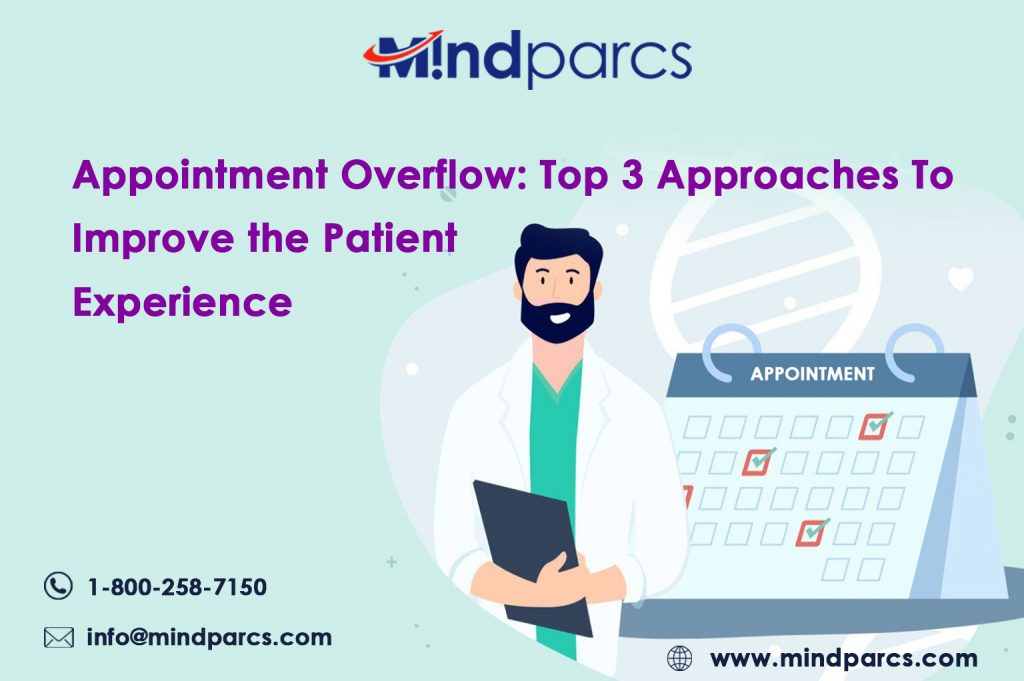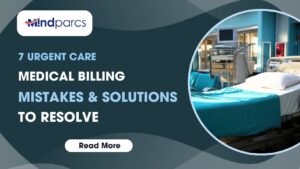
How to Overcome the Common Challenges in Podiatry Medical Billing
Overcome the Common Challenges in Podiatry Medical Billing Podiatrists have a crucial role in securing the mobility and overall health of individuals. However, their practices

Appointments overflow may have unwelcome repercussions for your staff stress levels and morale, it can also lead to a frustrating and negative experience for your patients. It may not always be possible to avoid delays, especially if patients go over their allotted consultation times as this may affect every subsequent appointment.
There are three approaches to improve the possible bad situation for your patients. This can also lighten the demands on your staff when you are faced with an overflow of appointments.
Appointment Overflow inevitably means long wait times and frustration, which has an impact on the patient satisfaction. Studies show that waiting times have a negative effect that can alter a patient’s experience.
Most practices would like for patients to have a positive experience when coming in for an appointment. There are three simple things that can be done to ensure a much more positive experience for patients whose appointments are delayed.
You never get a second chance to make a first impression so make it count. From the moment they walk into your office, your patients form an opinion of your practice and staff. Making a good first impression is important; this will help set the tone for the rest of their visit. Creating an environment that is relaxing and calming will ease anxiety and reduce stress to create a more pleasant experience.
Your reception area and waiting room can set the stage for everything that comes next. A clean environment, warm greeting and the attentiveness of your staff will go a long way towards creating a good impression.
The is a science behind the design of a waiting room and this can have a big impact on how patients feel. Make sure the décor is airy and use lighting and art to create a calming environment.
A lot of Medical Practices have televisions in their waiting areas, and they are often turned to news channels. This may be well intentioned, but it can increase stress for patients who may already be anxious. Try switching the channel to something more calming and uplifting, such as a nature or travel channel.
Here are some other suggestions:
Research have shown that providers can improve the patient waiting experience by being open and communicating. A patient’s willingness to wait can be increased by being honest about the delay.
The sooner you let patients know there is a wait, the better and provide them with a realistic expectation as to how long the delay is likely to be. This gives your patients options as they may decide to reschedule or run out for coffee.
An Apologizing is important and can have a significant positive impact on the outcome of a situation. A sincere expression of regret is the best way to keep patients happy as you want them to come back preventing a potential loss of revenue.
Make sure your team knows how to handle apologies and keep waiting patients informed about delays, if the apology is not sincere this may do more harm than good.
Healthcare is the second largest sector hit by the Great Resignation, partnering with a Best Medical Billing Companies such as MindParcs, Inc that can assist with front and back-office operations will help. Economic modeling data shows there will be a shortage of over 3 million healthcare workers by 2026. Since the pandemic, healthcare services across the world are struggling with staff shortages that jeopardize patients access to services.
It is more important than ever to keep hold of good staff and partners along with having a flexible workforce who can take on additional workloads when required.
Patient management software can handle all aspects of patient flow, including check in, triage, preparation, treatment, and payment. It offers a cloud-based application to automate the patient management process by alerting patients when their appointment is scheduled, allowing patients to book appointments remotely, and schedule reminders that reduce the chance of cancellations. Patients can receive an alert when there is a delay, so they can arrive for their appointment later and keep your waiting room from overflowing.
Telehealth or remote patient monitoring is the use of technology to allow patients to communicate with their doctors via phone, video, or the internet. Telehealth has been around for years; however, the use of this technology really took off during the pandemic.
Studies have shown that telehealth is generally welcomed by patients with one in three stating they prefer it to face-to-face office visits. For the elderly, infirm, and sick patients, it is a convenient way to see the doctor without having to of travel.
For healthcare workers, telehealth is being used to provide services such as remote or home-based care, visit monitoring, symptom surveillance, and other care coordination.
Patient portals were designed for staff to communicate with patient and to provide a better patient experience. They provide access to medical records and notes, which are often requested by patients but not always readily available. They allow patients to ask questions or provide feedback, so their voices are heard.
Patient portals and electronic health records (EHRs), allow patients access and update their records. This allows amendments to record that are ordinarily carried out at the front desk can be completed by the patient on their mobile phone or other electronic devices. In addition, health questionnaires, new patient information, consent forms, and other documents can be filled in by patients at home which keeps the patient flow moving at check in.
Research shows that patients are positive about using patient portals and that they help with reductions of missed appointments. This allows staff to devote time to their actual work rather than administrative responsibilities
There are lots of things to help fix to improving patient experience when faced with patient appointment overflow because there isn’t just one factor that causes it. The key is to introduce measures that enhance the effects of scheduling congestion with more efficient use of your team’s time.
There is a technological revolution that will be the main driver of improving efficiency in healthcare systems for both healthcare staff and patients. Artificial intelligence (AI) is already here and will become increasingly important in the future to aid medical professionals in providing treatment and care for an aging population. It is time to consider embracing it to keep your patients happy and enable you to grow your practice.

Overcome the Common Challenges in Podiatry Medical Billing Podiatrists have a crucial role in securing the mobility and overall health of individuals. However, their practices

Urgent Care Medical Billing Mistakes & Solutions to Resolve In healthcare industry, urgent care specialties play an important role in offering efficient medical services. However,
